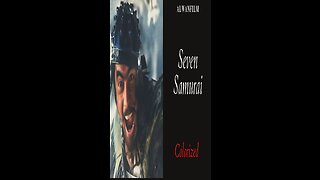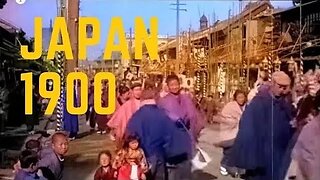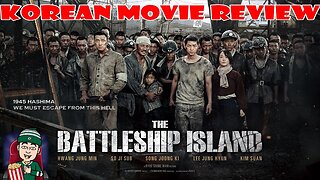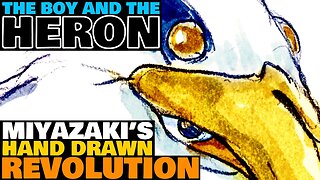Momotaro Sacred Sailors c.1945 : Japan's First Feature Length Animated Film
Momotaro, Sacred Sailors is an animated feature directed by Mitsuyo Seo, and bankrolled by Japan’s naval ministry as a work of war-time propaganda. It was released on 12 April 1945. Four months later the war would be over, with Japan formally surrendering to the USA on 2 September. Despite its crude purpose, Momotaro was the first ever feature-length Japanese animation ever released. Everything has to begin somewhere, and for anime – for better or worse – it started here.
A group of four animals – a puppy, a pheasant, a monkey, and a bear – leave their families to help with the Japanese war effort. After basic training, they are dispatched as paratoopers to invade Suwawesi and wrest control from the American occupiers.
Japan came to feature animation somewhat behind other countries. Argentina launched their first animated feature in 1917, Germany in 1926, France in 1930, the Soviet Union in 1935, the USA in 1937, and China in 1941. While Japan trailed multiple countries, it made up for lost time of course – eventually become the most active producer of animation on the planet.
Momotaro, Sacred Sailors is actually a sequel to an earlier animated film directed by Mitsuyo Seo. The 37-minute Momotaro no Umiwashi was released in 1943, and worked very much as a dry run for the later picture. The story of the film is relatively episodic, forming a series of scenes accompanied by musical numbers and a variety of cute animals aiding Japan in its war effort. Seo includes a broad range of animals as well, including elephants, rhinoceroses, kangaroos, and proboscis monkeys. Their playful antics and cheerful singing seem particularly striking against the Japanese aircraft, soldiers, and cultural artefacts such as headbands, traditional swords, and packaged rice lunches. It is, without question, a work of war-time propaganda, but at the same time Seo pulls his punches. While Americans are depicted as cowardly and weak, there is a lot more room for caricature and insults than he chooses to take.
The visual aesthetic of the film is visibly drawn from early American productions, notably Walt Disney and Max Fleischer, however the various cultural notes of Japanese society give it a distinctive feel of its own. The animation has a tendency to pop off the screen here and there with an effective 3D effort, largely generated by rotoscoped art (in which cartoon drawing have been superimposed over live photography. While the typical anime ‘look’ has not yet been developed, Seo has no problem in making his young animal characters charming to look at. One highlight in particular is a lengthy musical sequence in which the animals go to school and learn their alphabet. Future artist and animator Osamu Tezuka (Astroboy, Kimba the White Lion) would later speak of the scene as one of his earliest inspirations.
Like many Japanese films, prints of Momorato, Sacred Sailors were burned by occupying Americans. It was only by chance a sole remaining copy was rediscovered in 1983. It is a great fortune to still have it: while it does feel a little bloated and slow in places, it glimmers with an unexpected amount of delight despite its original purpose.
https://fictionmachine.com/2020/06/06/review-momotaro-sacred-sailors-1945/
-
 6:22
6:22
Entertainment Trunk
10 months ago100 Best Anime Movies of All Time
339 -
 3:00
3:00
AlwanFilm
1 year agoSeven Samurai Colorized
1.37K -
 11:14
11:14
UpscaledHistory
1 year agoJapan 1900s History Documentary 日本 Kyoto Osaka Tokyo 日本 大阪 東京
28 -
 2:55:09
2:55:09
Awayion
5 months agoSerene Ghibli-inspired ocean anime 🌊 | Relaxing ASMR | Awayion
621 -
 8:04
8:04
That SeventiesRockFan
10 months ago🎬 "The Battleship Island" Korean Movie Review 🚢💣 | Unforgettable Historical Drama!
20 -
 5:09
5:09
TheBlackfordBookClub
8 months ago"BULLET TRAIN" (2022) #bradpitt #kyoto #japan #movies #moviereview
10 -
 9:08
9:08
Nerd Cookies
8 months agoThe Boy & The Heron | Miyazaki's Hand Drawn Revolution | Studio Ghibli
231 -
 52:47
52:47
Adaneth - History&Politics
7 months agoThe Samurai
238 -
 1:53:03
1:53:03
VintageConnoisseur Presents
1 year agoThe Snows Of Kilimanjaro 1952 | Classic Adventure Movies | Classic Drama Movies
232 -
 11:25
11:25
Zany_One_Pip
2 years agoJapan: Wars of Liberty (Age of Empires 3 Mod) Let's Play
53